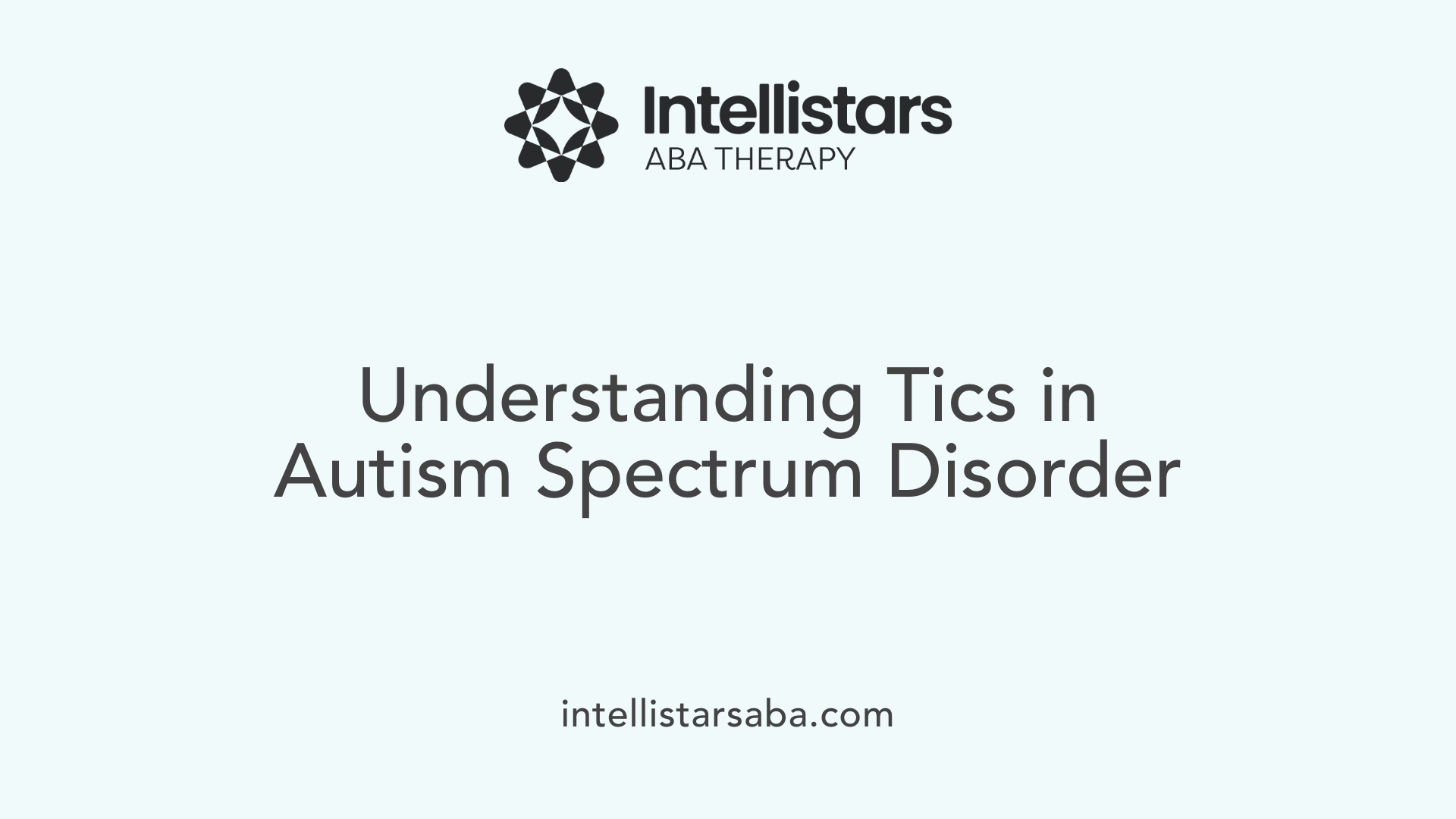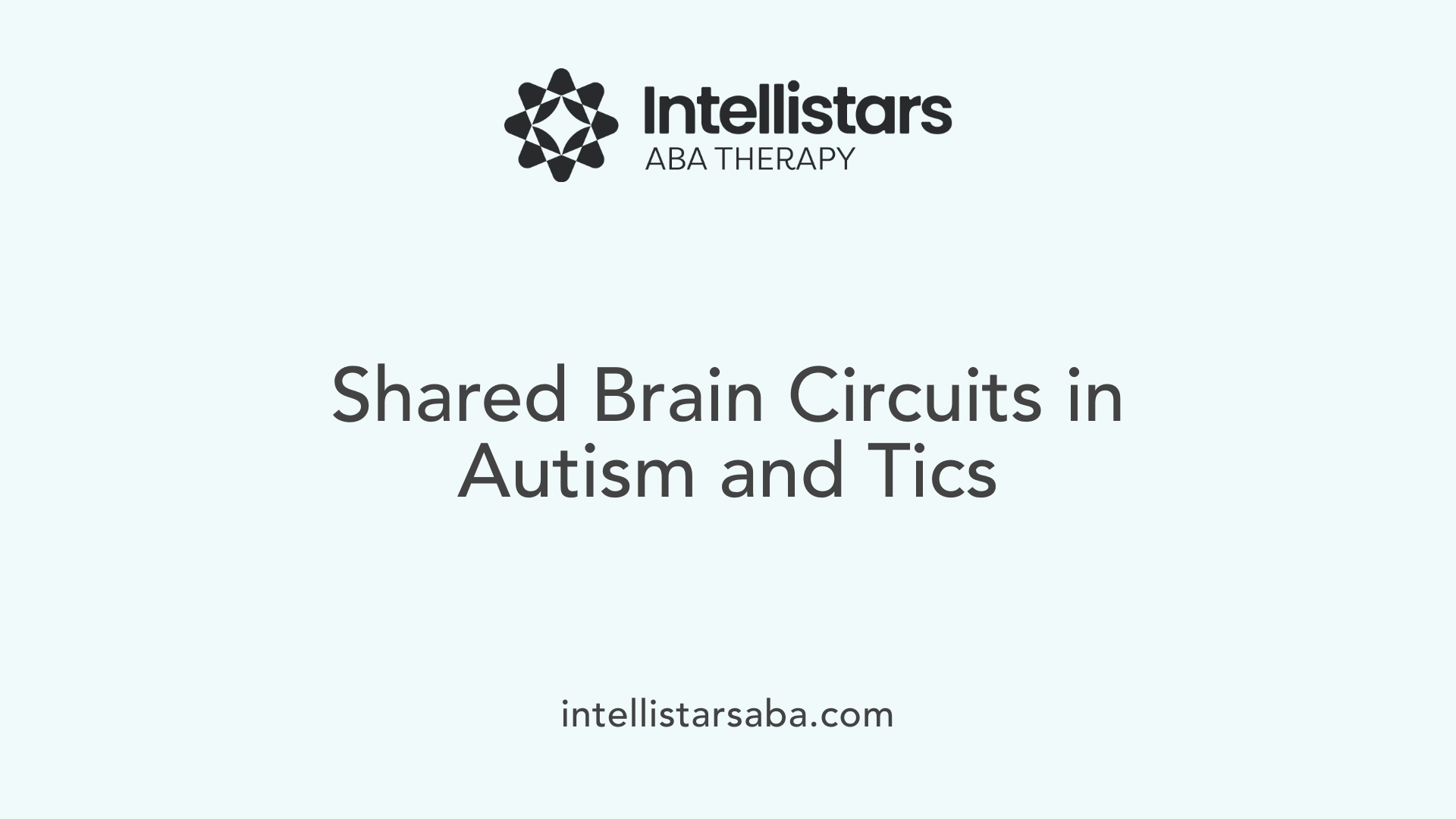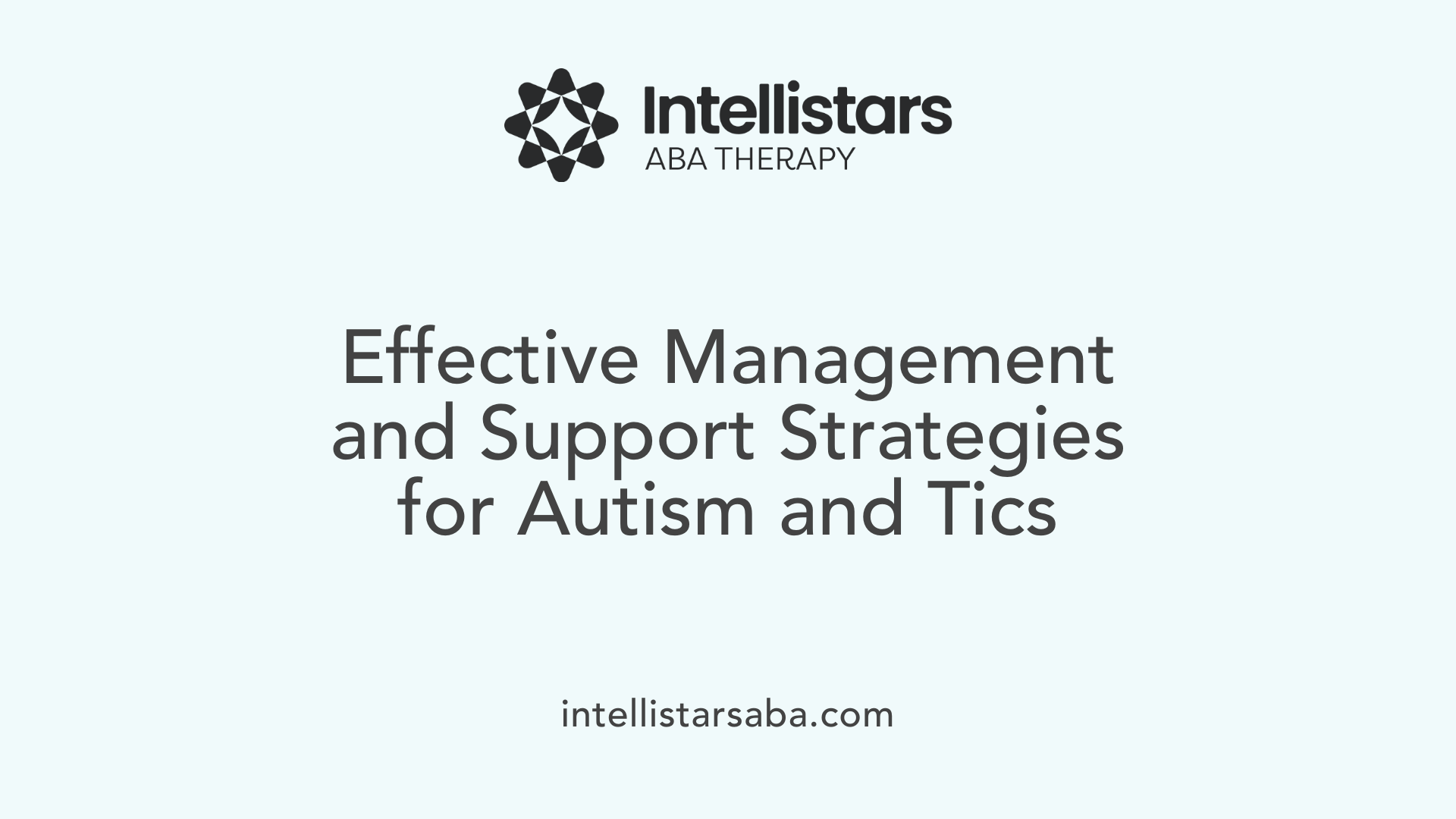Exploring the Complex Relationship Between Autism Spectrum Disorder and Tics
Autism spectrum disorder (ASD) and tic disorders frequently co-occur, especially in childhood and adulthood. While traditionally considered distinct neurological conditions, recent research highlights significant overlap in their neurobiological mechanisms, clinical presentations, and management strategies. This article aims to shed light on the current scientific understanding of how tics manifest within the autism spectrum, differentiating them from other behaviors such as stimming, and exploring diagnostic, treatment, and support options for affected individuals.
The Prevalence and Nature of Tics in Autism Spectrum Disorder

What is the relationship between autism spectrum disorder and tic disorders?
Research indicates that tics are frequently co-morbid with autism spectrum disorder (ASD), especially in adults, with a prevalence of around 18.4%. Many individuals with ASD experience various types of tics—motor and vocal—that tend to be less severe and less frequent than in Tourette syndrome (GTS). Often, these tics are underrecognized because of limited awareness and may occur outside of conscious control, with individuals being only partially aware of them. The underlying neurobiological mechanisms involve brain regions such as the basal ganglia, which are critical for movement and sensory processing. The presence of tics correlates with more pronounced behavioral and social difficulties, highlighting a complex interaction between core ASD symptoms and tic expression.
What does current scientific research say about autism and tics?
Recent studies show that between 4% and 12% of those with ASD also have tics, with some populations showing higher prevalence rates up to 20% in high-functioning groups. Evidence suggests that individuals with ASD and tics are often older and possess higher IQ scores than those without tics. Tics in ASD typically include brief, involuntary movements or sounds such as blinking, throat clearing, or sniffing. These behaviors tend to wax and wane over time, often worsening in stressful or sensory-challenging situations. Neurologically, both ASD and tic disorders involve abnormal activity within the basal ganglia circuits, and genetic factors contribute substantially to both conditions. Such overlaps underscore the importance of precise diagnosis for appropriate management.
What are the characteristics, types, and symptoms of tics in individuals with autism?
Tics in autistic individuals are characterized by sudden, brief, involuntary motor movements—like eye blinking, grimacing, head jerking—and vocalizations such as throat clearing and sniffing. They may be simple, involving isolated actions or sounds, or complex, involving multiple behaviors like jumping, echolalia (repetition of others’ speech), or gestures. Premonitory urges—an internal sensory discomfort preceding tics—are common but may be less recognized, especially in adults. Tics tend to increase with stress, fatigue, or sensory overload, and are often distinguished from stereotypies—rhythmic, purposeful behaviors—by their involuntary nature. Management involves behavioral therapies, environmental modifications, and, when necessary, medication, emphasizing acceptance and support.
What is known about the prevalence and clinical features of tics within the autism population?
Studies estimate that 9% to 18.4% of those with ASD exhibit tics. These behaviors can include both motor and vocal types, and their severity varies. Tics often become more prominent with age and are associated with higher scores on behavioral and social challenge scales like the Social Responsiveness Scale and behavioral checklists. Awareness among individuals with ASD about their tics is frequently limited, and many are unable to control or suppress these movements effectively. Tics tend to be milder than those observed in classic Tourette syndrome but can cause social embarrassment and emotional distress, making recognition vital for appropriate intervention.
How can tics be differentiated from other behaviors such as stimming in autism?
Distinguishing tics from stimming behaviors is essential for accurate diagnosis. Tics are sudden, involuntary, brief, and often preceded by an internal urge, making them semi-voluntary. They usually increase in frequency with stress and are non-rhythmic, such as blinking or throat clearing. Stimming, on the other hand, is typically voluntary, purposeful, and rhythmic—performed consciously to self-soothe or manage sensory overload—examples include hand flapping or rocking. While both may appear repetitive, tics are less controllable and tend to fluctuate, whereas stims are often sustained and controllable behaviors. An assessment by healthcare professionals is important to differentiate, as management strategies differ.
What are the management and treatment options available for tics in autistic individuals?
Management of tics includes behavioral therapies like Habit Reversal Training (HRT) and Comprehensive Behavioral Intervention for Tics (CBIT), focusing on increasing tic awareness and implementing competing responses. Pharmacological options may involve medications such as antipsychotics (risperidone or aripiprazole) and alpha-2 adrenergic agonists (clonidine), especially when tics cause significant distress or impairment. Supportive measures include creating a calming environment, providing explanations suited to the child's level of understanding, and developing self-advocacy skills. A multidisciplinary team approach involving psychologists, neurologists, and occupational therapists is most effective for tailoring treatment. Acceptance of tics as part of neurodiversity and promoting understanding among teachers, peers, and family members is also vital.
How does autism spectrum disorder compare with Tourette syndrome?
While both ASD and Tourette syndrome (TS) feature repetitive behaviors, their core characteristics differ. ASD involves social communication challenges, fixed routines, and sensory sensitivities, with stereotyped behaviors typically rhythmic and purposeful—like rocking or flapping. TS is characterized by involuntary, rapid motor and vocal tics, such as blinking, grunting, or echolalia, which tend to wax and wane over time and are often preceded by premonitory urges. Tics are generally brief and can be suppressed temporarily, whereas stereotypies are more rhythmic and voluntary. Although comorbidity exists—up to 20% of children with ASD may have tics—each condition requires distinct considerations for management.
| Aspect | Autism Spectrum Disorder (ASD) | Tourette Syndrome (TS) | Shared Features |
|---|---|---|---|
| Core symptoms | Social challenges, restricted interests | Motor and vocal tics | Repetitive behaviors and sensory sensitivities |
| Onset | Early childhood, before age 3 | 3-8 years | Both can include involuntary movements |
| Involuntary movements | Stereotypies, often rhythmic | Tics, brief and rapid | Both involve involuntary or semi-voluntary behaviors |
| Awareness | Varies, often limited | Usually premonitory urge present | Both may include sensory phenomena |
| Management | Behavioral, educational, supportive | Behavioral therapies, medications | Approaches may overlap, emphasizing behavioral strategies |
| Neurobiology | Altered connectivity, sensory processing issues | Basal ganglia, dopamine imbalance | Both involve neurodevelopmental pathways |
Understanding these differences is crucial for accurate diagnosis and tailored interventions, supporting individuals within their unique neurodevelopmental profiles.
Neurobiological Underpinnings and Genetic Links

What is the relationship between autism spectrum disorder and tic disorders?
Research indicates that tics are frequently co-morbid with autism spectrum disorder (ASD), particularly in adults, with a prevalence of around 18.4%. Individuals with ASD can experience various types of tics—both motor and vocal—which tend to be less severe and less frequent than those observed in Tourette syndrome (GTS).
Tics in ASD are often underrecognized due to limited awareness among caregivers and clinicians. Many individuals with ASD are not fully conscious of their tics, which can complicate diagnosis and management.
At a neurological level, both conditions involve similar brain circuits. The basal ganglia, a group of nuclei deep in the brain, are central in controlling movement and sensory processing. Dysfunction in this area is linked to the involuntary movements characteristic of tics.
Furthermore, the severity of tics correlates with increased scores on measures of social difficulty, such as the Social Responsiveness Scale (SRS-2), suggesting that tics might exacerbate certain behavioral aspects of ASD. This points to a complex interaction where neurobiological factors influence both core ASD traits and tic expression.
What does current scientific research say about autism and tics?
Recent studies reveal that around 4-12% of individuals with ASD exhibit tics, with some research suggesting rates as high as 20% in specific subgroups. Individuals with both ASD and tics tend to be older and have higher IQ scores than their counterparts with ASD alone.
Compared to Tourette syndrome, tics in ASD are generally less intense and less noticeable. These individuals often experience less premonitory urge and may not seek to suppress tics as actively.
Neuroimaging and genetic studies have shown overlapping patterns of brain abnormalities, especially within the basal ganglia circuits. These shared neurodevelopmental pathways support the hypothesis that ASD and tic disorders might have common underlying neurobiological roots.
Sensory phenomena, such as heightened sensitivities, are also widespread in both groups, influencing the severity and frequency of tics. These findings reinforce the importance of accurate diagnosis and understanding the intricate neurobiological links between the two conditions.
How do neurobiological factors contribute to the manifestation of tics in ASD?
Central to the development of tics in individuals with ASD are dysfunctions in brain regions involved in movement regulation. The basal ganglia, thalamus, and frontal cortex form a network responsible for controlling voluntary movement and filtering sensory information.
Alterations in these regions, as identified through neuroimaging studies, suggest disrupted communication within the motor control pathways. These disruptions lead to the involuntary, rapid, and repetitive movements seen as tics.
Neurochemical imbalances, especially involving dopamine—the primary neurotransmitter associated with motor control—are crucial. An excess or dysregulation of dopamine within the basal ganglia enhances the likelihood of involuntary movements.
Research supports the idea that both structural anomalies and chemical imbalances create a shared neurobiological framework for ASD and tic disorders, influencing how tics manifest and wax and wane over time.
| Aspect | Description | Relevance to ASD and Tics |
|---|---|---|
| Brain Regions | Basal ganglia, thalamus, frontal cortex | Critical in movement regulation; dysfunction linked to tics and ASD severity |
| Neurochemical Imbalance | Elevated dopamine levels | Contributes to involuntary movements; target for medication |
| Genetic Factors | Heritability estimates around 90% for ASD, 89-94% for TS | High genetic overlap suggests shared etiological pathways |
| Neurodevelopment | Altered brain circuits during development | Explains early onset and persistence of conditions |
These neurobiological insights inform current treatment approaches. Behavioral interventions, such as Cognitive Behavioral Intervention for Tics (CBIT), aim to increase awareness of tics and develop competing responses to reduce their frequency. Pharmacological treatments, including dopamine antagonists, seek to restore neurochemical balance.
Understanding these shared neural and genetic foundations enhances personalized medicine strategies, addressing both core ASD symptoms and co-occurring tics to improve quality of life.
Supporting Individuals with Autism and Tics: Strategies and Approaches

What are the management and treatment options available for tics in autistic individuals?
Managing tics in autistic individuals involves a combination of behavioral, pharmacological, and supportive strategies tailored to individual needs. Behavioral therapies such as Habit Reversal Training (HRT) and Comprehensive Behavioral Intervention for Tics (CBIT) focus on increasing awareness of tics and developing competing responses to reduce their frequency and severity.
Medications can be effective, especially for moderate to severe tics. Common options include antipsychotics like risperidone and aripiprazole, as well as alpha-agonists such as clonidine and tetrabenazine, which help in diminishing tic severity. In more resistant cases, advanced procedures like deep brain stimulation may be considered, although these are less frequently used.
Supporting strategies extend beyond medical treatment. Creating a calming, well-structured environment helps reduce stressors that may worsen tics. Providing explanations appropriate to the individual's age and comprehension aids in better understanding and acceptance of tics. Developing self-advocacy skills empowers individuals to communicate their needs and experiences effectively.
A multidisciplinary approach involving healthcare professionals with expertise in neurodevelopmental disorders ensures comprehensive and personalized treatment planning. This integrated method aims to improve quality of life and facilitate better social, emotional, and daily functioning.
What supportive strategies can help improve the quality of life for individuals with autism and tics?
Support strategies focus on creating a supportive, low-stress environment. Maintaining a predictable routine helps reduce anxiety, which can exacerbate tics. Sensory-friendly spaces and tools, like noise-canceling headphones or sensory toys, can help manage sensory overload.
Clear, simple communication and visual aids are valuable in explaining tics and related behaviors. Educating families, teachers, and peers about the involuntary nature of tics fosters understanding and reduces stigma. Encouraging self-awareness and self-advocacy skills enables individuals to recognize their tics and develop personal coping mechanisms.
Stress reduction techniques, including relaxation exercises, mindfulness, and breathing strategies, can lessen tic intensity. Sensory regulation tools help manage the sensory sensitivities often present in autism, promoting greater comfort.
Promoting acceptance of neurodiversity and emphasizing strengths rather than deficits encourages positive social interactions and self-esteem. Occupational therapy plays a critical role in enhancing motor control and self-regulation, supporting everyday functioning.
How do management strategies differ between addressing tics and stereotypies in autism?
Tics and stereotypies, although both involving repetitive behaviors, require different management approaches. Tics are involuntary responses that often come with premonitory urges, fluctuating in severity and frequency. Treatment focuses on behavioral therapies like CBIT to increase awareness and teach alternative responses, with medications used when necessary.
Stereotypies are rhythmic, purposeful, or self-stimulatory behaviors that usually serve a calming or self-regulatory function. They tend to be more voluntary and are often rhythmic and rhythmic. Management of stereotypies involves sensory integration strategies, environmental modifications, and behavioral interventions aimed at reducing the frequency or helping channel the behavior into less disruptive forms.
Understanding these distinctions helps clinicians and caregivers develop tailored interventions that address the specific behaviors, improving overall outcomes and well-being.
| Aspect | Tics | Stereotypies | Differences |
|---|---|---|---|
| Nature | Involuntary, quick, recurring | Purposeful, rhythmic, self-regulatory | Involuntary vs. voluntary |
| Onset | Usually around age 6 | Usually before age 3 | Age of onset |
| Triggers | Stress, fatigue, sensory overload | Sensory needs, self-soothing | Triggers |
| Management | Behavioral therapies, medications | Sensory integration, behavioral adjustments | Treatment approaches |
| Examples | Eye blinking, throat clearing | Hand flapping, rocking | Behavioral examples |
Recognizing these behaviors and applying appropriate interventions promote better management and support for individuals navigating autism and associated motor behaviors.
Empowering Understanding and Acceptance
Recognizing the complex relationship between autism spectrum disorder and tics is essential for effective diagnosis, management, and compassionate support. While tics can significantly impact quality of life, early identification, personalized behavioral interventions, pharmacological support, and creating inclusive environments can reduce their burden. Embracing neurodiversity and fostering awareness among educators, families, and healthcare providers are key steps toward promoting acceptance and enabling individuals with autism and tics to thrive within their communities. Continued research into the neurobiological underpinnings promises more refined treatment options and a deeper understanding of these interconnected neurodevelopmental conditions.
References
- Tic Phenomenology and Tic Awareness in Adults With Autism - PMC
- Tics in Autism: Why They Happen & What to Do About Them
- Clinical characteristics of comorbid tic disorders in autism spectrum ...
- Autism and Tic Disorders - Seattle Children's Hospital
- [PDF] Differences and similarities of ASD and Tourette Syndrome
- What Are Autistic Tics? - Psych Central
- Autism and Tics: Is There a Connection?
- Autism and Tics - Golden Care Therapy
- A review of co-occurrence of autism spectrum disorder and Tourette ...
- Examples of Tics Seen in Individuals with Autism - SkyCare ABA






